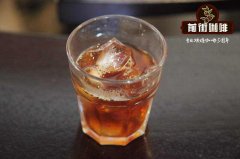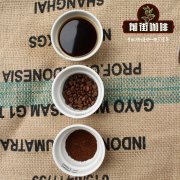Coffee pulp tea have you ever had coffee peel tea? Brewing method of coffee peel tea

Professional coffee knowledge exchange more coffee bean information please follow the coffee workshop (Wechat official account cafe_style)
Coffee, pulp, tea-is it coffee or tea? Since the rise of hand-brewed and freshly brewed coffee, as well as the increase in demand for tea, the boutique coffee industry and the tea industry have changed greatly in recent years.
Among them is an exotic new drink called Cascara, also known as coffee pulp tea, which is still not an easy ingredient to find even if it is slowly being sold in coffee shops around the world. Therefore, these strangers to Cascara may wonder what the drink looks like and what taste it tastes like.
Cascara in Spanish means skin, shell, or skin, that is, the dried pulp of coffee, which is the substance taken from the middle seed (coffee beans) from the coffee fruit and exposed to sunlight before packaging and transportation. These dried flesh are not like tea bags, mainly because the dried flesh looks slightly larger than tea leaves.
And has a leather and woody appearance like raisins or nut shells. With regard to the benefits of the coffee pulp process, it is not only valuable in farming, it is also very environmentally friendly. Coffee pulp is usually regarded as a by-product of coffee treatment, either directly discarded or used as compost. Now, these pulps are being reused to make unique drinks.
Is it coffee? Tea? Or both coffee and tea?
Cascara is not coffee, nor is it tea.
Because Cascara comes from coffee plants rather than tea plants, it cannot be classified as real tea.
Some people think that Cascara is not herbal tea either, but more like the flavor of fruit.
However, some herbal teas are made from fruit, so perhaps the best way to classify Cascara is fruit herbal tea.
Coffee and pulp tea may be a novel drink in some places, but it is a popular drink in some areas.
According to coffee suppliers in Melbourne:
"for centuries, coffee farmers in Yemen and Ethiopia have dried coffee pulp and brewed it to drink.
It may even be done before coffee beans are made into drinks.
These countries add dried pulp to spices, such as ginger, nutmeg or cinnamon.
In Ethiopia it is called Hashara, and Yemen is called Qisher.
These drinks are still very popular in these countries.
Even coffee pulp sells more than coffee beans in Yemen because it is cheaper than coffee beans.
Important Notice :
前街咖啡 FrontStreet Coffee has moved to new addredd:
FrontStreet Coffee Address: 315,Donghua East Road,GuangZhou
Tel:020 38364473
- Prev

Hand-brewed coffee beans how to select defective beans? What are defective beans? Which are defective beans?
Professional coffee knowledge exchange more coffee bean information please follow the coffee workshop (Wechat official account cafe_style) We are looking for "defective beans". The so-called defective beans (defected beans) are poor quality, bad coffee beans, or substances other than coffee beans mixed in the whole bag of coffee beans. We will pick the beans before the coffee beans are roasted.
- Next

The effect of Coffee on people what is the effect of drinking Coffee on Health
For more information on coffee beans, please pay attention to the ingredients of coffee in the coffee workshop (Wechat official account cafe_style) Coffee contains a variety of bioactive compounds, including methylxanthine such as caffeine, theophylline and theobromine, as well as flavonoids and phenols. One of the most frequently mentioned is "caffeine", but other ingredients in coffee are also due to drinking coffee.
Related
- Beginners will see the "Coffee pull flower" guide!
- What is the difference between ice blog purified milk and ordinary milk coffee?
- Why is the Philippines the largest producer of crops in Liberia?
- For coffee extraction, should the fine powder be retained?
- How does extracted espresso fill pressed powder? How much strength does it take to press the powder?
- How to make jasmine cold extract coffee? Is the jasmine + latte good?
- Will this little toy really make the coffee taste better? How does Lily Drip affect coffee extraction?
- Will the action of slapping the filter cup also affect coffee extraction?
- What's the difference between powder-to-water ratio and powder-to-liquid ratio?
- What is the Ethiopian local species? What does it have to do with Heirloom native species?

